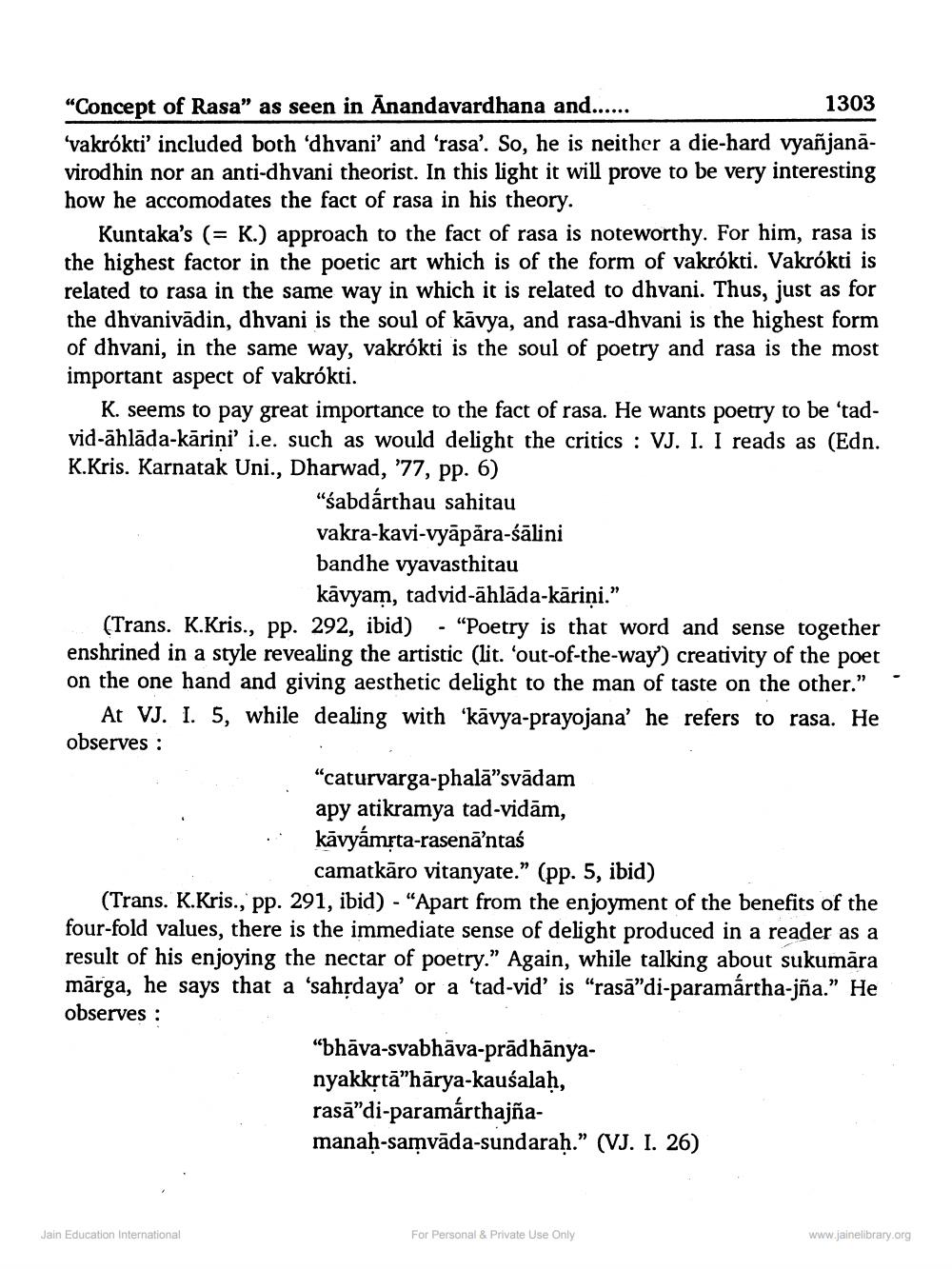________________
“Concept of Rasa” as seen in Anandavardhana and......
1303 'vakrókti' included both dhvani' and 'rasa'. So, he is neither a die-hard vyañjan.virodhin nor an anti-dhvani theorist. In this light it will prove to be very interesting how he accomodates the fact of rasa in his theory.
Kuntaka's (= K.) approach to the fact of rasa is noteworthy. For him, rasa is the highest factor in the poetic art which is of the form of vakrókti. Vakrókti is related to rasa in the same way in which it is related to dhvani. Thus, just as for the dhvanivādin, dhvani is the soul of kāvya, and rasa-dhvani is the highest form of dhvani, in the same way, vakrókti is the soul of poetry and rasa is the most important aspect of vakrókti.
K. seems to pay great importance to the fact of rasa. He wants poetry to be 'tadvid-ählāda-kārini' i.e. such as would delight the critics : VJ. I. I reads as (Edn. K.Kris. Karnatak Uni., Dharwad, '77, pp. 6)
"sabdárthau sahitau vakra-kavi-vyāpára-śālini bandhe vyavasthitau
kávyam, tadvid-ählāda-kārini." (Trans. K.Kris., pp. 292, ibid) - “Poetry is that word and sense together enshrined in a style revealing the artistic (lit. 'out-of-the-way) creativity of the poet on the one hand and giving aesthetic delight to the man of taste on the other."
At VJ. I. 5, while dealing with 'kāvya-prayojana' he refers to rasa. He observes :
"caturvarga-phalā"svādam apy atikramya tad-vidām, kāvyámộta-rasenā’ntaś
camatkāro vitanyate.” (pp. 5, ibid) (Trans. K.Kris., pp. 291, ibid) - "Apart from the enjoyment of the benefits of the four-fold values, there is the immediate sense of delight produced in a reader as a result of his enjoying the nectar of poetry." Again, while talking about sukumāra mārga, he says that a 'sahrdaya' or a 'tad-vid' is "rasā"di-paramártha-jña." He observes :
“bhāva-svabhāva-prādhānyanyakkṛtā"hārya-kausalaḥ, rasā"di-paramárthajñamanah-samvāda-sundaraḥ.” (VJ. I. 26)
Jain Education International
For Personal & Private Use Only
www.jainelibrary.org




